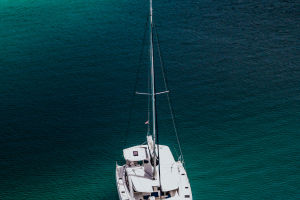For centuries, wind machines have been instrumental in enhancing productivity and replacing human and animal labor, akin to hydraulic machinery.
The emergence of oil fields in the Middle East during the 1950s hindered the advancement of wind turbines, as electromechanical power became prevalent in modern society.
However, the global "oil crisis" and energy shortages in the early 1970s, combined with concerns over the instability and finite nature of conventional fossil fuels, prompted a renewed interest in clean, renewable energy sources. As a result, wind energy regained importance as a sustainable and environmentally friendly alternative to traditional energy sources.
Windmills originally originated in Persia, with vertical-axis windmills being the earliest design, followed by horizontal-axis windmills.
They were introduced to Europe and became popular in the 15th century.
From the late 18th century, advancements in industrial technology led to significant enhancements in windmill design and functionality.
Modern windmills are equipped with manual and mechanical self-control mechanisms, allowing for adjustments in blade pitch to regulate wind-wheel speed.
Any physical configuration that generates asymmetric forces in air flow can become a wind energy-receiving device, rotating, translating, or oscillating in motion and producing mechanical work.
Wind turbines are mainly classified based on their structural form and spatial arrangement of the wind energy receiving device, and are generally divided into horizontal-axis and vertical-axis structures.
For example, a conventional wind energy-receiving device like a wind turbine can be classified into the horizontal-axis wind turbine type (with the axis parallel to the airflow), the side wind horizontal-axis wind turbine type (with the axis parallel to the ground and perpendicular to the airflow direction), and the vertical-axis wind turbine type (with the axis perpendicular to both the ground and airflow direction).
Wind turbines include devices that use wind to produce translational motion, such as wind sailing ships and ancient Chinese trolleys with sails. Whatever the type of wind turbine, it comprises a wind energy receiving device, control mechanism, transmission, and support components, among other things. Modern wind turbines also include supporting systems like power generation and energy storage.
Modern wind turbines are designed with improved storm resistance, featuring blades crafted from a variety of lightweight materials. Advances in aerodynamic techniques have increased the wind energy utilization factor to approximately 0.45, while microprocessor control systems ensure optimal operating conditions for wind turbines.
Additionally, wind turbine array systems have been developed, leading to diversified turbine structures. The vertical-axis wind turbine, initially invented by the French in the 1920s but largely overlooked for decades, has resurfaced as a promising model. Available in various configurations, this turbine type offers high operating speeds, efficiency, and a simple drive train, albeit requiring an auxiliary device to initiate operation.
Wind energy has become a key player in the renewable energy sector, experiencing a resurgence due to growing concerns about the environmental consequences of fossil fuel use. Over the years, wind turbines have undergone substantial advancements in their design, functionality, and effectiveness.
Despite encountering challenges, such as intermittency and grid integration, there is a prevailing optimism surrounding wind energy's capacity to serve as a sustainable and environmentally friendly power source for the future.


